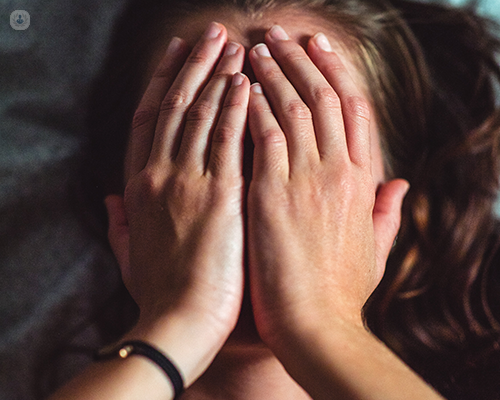Generalised anxiety disorder: when anxiety takes over our lives
Written in association with:Generalised anxiety disorder can last days or months and with symptoms ranging from physical to mental. Learn when anxiety becomes a problem and the solution to getting your life back on track, as explained by one of the most senior and respected psychiatrists in the UK, Dr Oscar D’Agnone.

Some anxiety is normal
Anxiety is to our mind like pain is to our body: it is a signal, like an alarm, that is triggered by emotional tension or conflict. Much like pain, anxiety is a normal part of life. This is, however, as long as it doesn’t interfere with daily living by causing problems in our personal or social life. We can usually control anxiety and carry on, like when arriving late for an appointment or awaiting test results.
Anxiety that takes over life is a problem
When anxiety takes over our lives, we have a medical problem. This refers to when the anxiety is making changes to our usual life in ways such as avoiding places or circumstances that can create anxiety like work, in the streets, or at social events. The result is that you start to withdraw and spend more time in isolation, usually under a state of apprehension. Persistent anxiety usually results in a lack of self-confidence, which ultimately has a massive impact on everyday life.
Tolerance to anxiety is different for everyone and some people can tolerate high levels of anxiety or stress that are caused by a difficult situation: they continue with their normal lives once the situation has changed. Others are less tolerant and very soon they experience symptoms such as
- Anguish
- Uncertainty
- A lack of control over emotions
- The sensation that something is wrong (but they don’t know what it is nor can they do anything about it)
- insomnia and tension
These symptoms become overwhelming and unbearable.
Generalised Anxiety Disorder (GAD)
Most people feel a mixture or combination of the above-mentioned symptoms, some mental and some physical, and this is what doctors call GAD or generalised anxiety disorder. Usually, it lasts for a limited period of time: from days to months.
There are five types of anxiety disorders. GAD is one of them and usually the first one to appear. The other four are OCD (obsessive-compulsive disorder), panic attacks, PTSD (post-traumatic stress disorder) and social phobia.
Panic attacks
When general anxiety peaks and turns extreme, it turns into panic. When this extreme panic appears all of a sudden, we refer to it as a panic attack. At that point, people feel that something very bad and life-threatening is happening to them. They can feel short of breath, like having a weight in their chest. Some sufferers may think they are having a cardiac emergency and that they are about to die.
Intense anxiety is frequently accompanied by physical symptoms such as sweating, palpitations, restlessness, agitation, dizziness, irrational fear, even when there is no known threat.
The solution
The good news is that today we can offer medical and psychological solutions for all these problems. There are several medications that are very effective in controlling anxiety, including generalised anxiety disorder, and to stop it in its tracks straight away.
Taking medication for anxiety is a very important first step when beginning to gain more control over the symptoms via cognitive and behavioural interventions. It’s also an important first step when learning to understand the personal and social factors that trigger the anxiety via psychotherapeutic interventions.
A combination of medical and psychological interventions for a limited period of time usually resolves GAD, allowing people to continue enjoying their personal and social lives once more.
Learn how Dr Oscar D’Agnone can help you overcome mental health conditions such as anxiety, addiction, depression and get in touch by visiting his profile.



